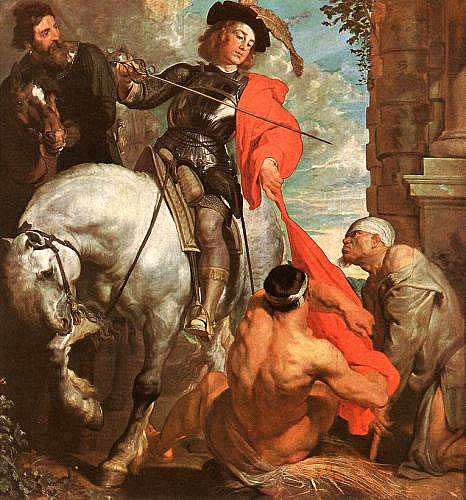
On the 11th day of the 11th month at exactly 11 minutes past 11
o'clock a.m. St. Martin's day is celebrated. It is mostly favored
by youth and rural population. Martin, the bishop
of Tours, lived in the 4th century. The soldier in his past,
he was given this title due to his exemplary way of life.
Actually, this holiday originated from France, then spread to Germany,
Scandinavia, and Eastern Europe. It is considered to be the most
popular of all the saints' days. St. Martin's day celebrates the
end of the agrarian year and the beginning of the harvesting. The
second meaning of this day is the end of the period of all souls,
that started on November, 1st with Halloween, or All Saints' Day.
That is why St. Martin's day's activities resemble those done on Halloween. People, mostly
children, walk down the streets with lanterns and torches, and sing Martin's songs praising the
saint's generosity. Then kids come into the nearby houses and by
singing songs, dancing, or citing poems earn sweets, pies, or whatever
the host can give them.
The symbol of the
St. Martin's day is the goose. There is a legend saying that
geese have betrayed him with their gabbling when he tried to hide
in a stall as he was to be appointed bishop. So, the birds are "sacrificed"
being butchered on this day. This is a good time for that, as they
are quite ready for harvesting. Moreover, the
goose has proved to be multipurpose: feathers are used for pillows
and featherbeds, quills are used for writing, the eggs are good for
baking, the fat is needed for baking and can be eaten on bread, the
bird makes a great "Braten," and even the wing can be used
for dusting! Why not take chance and make use of such a wonderful
animal?
Besides, it is a great chance to have fun with your friends!
Next page > St.
Andreas' Day > Page 1,
2, 3,
4, 5,
6, 7,
8
Related Resources
Christmas Traditions from Germany
Christmas Recipes
Sylvester, or New Year's Eve
Gluehwein
German Holidays Traditions
All About Germany
|
|
